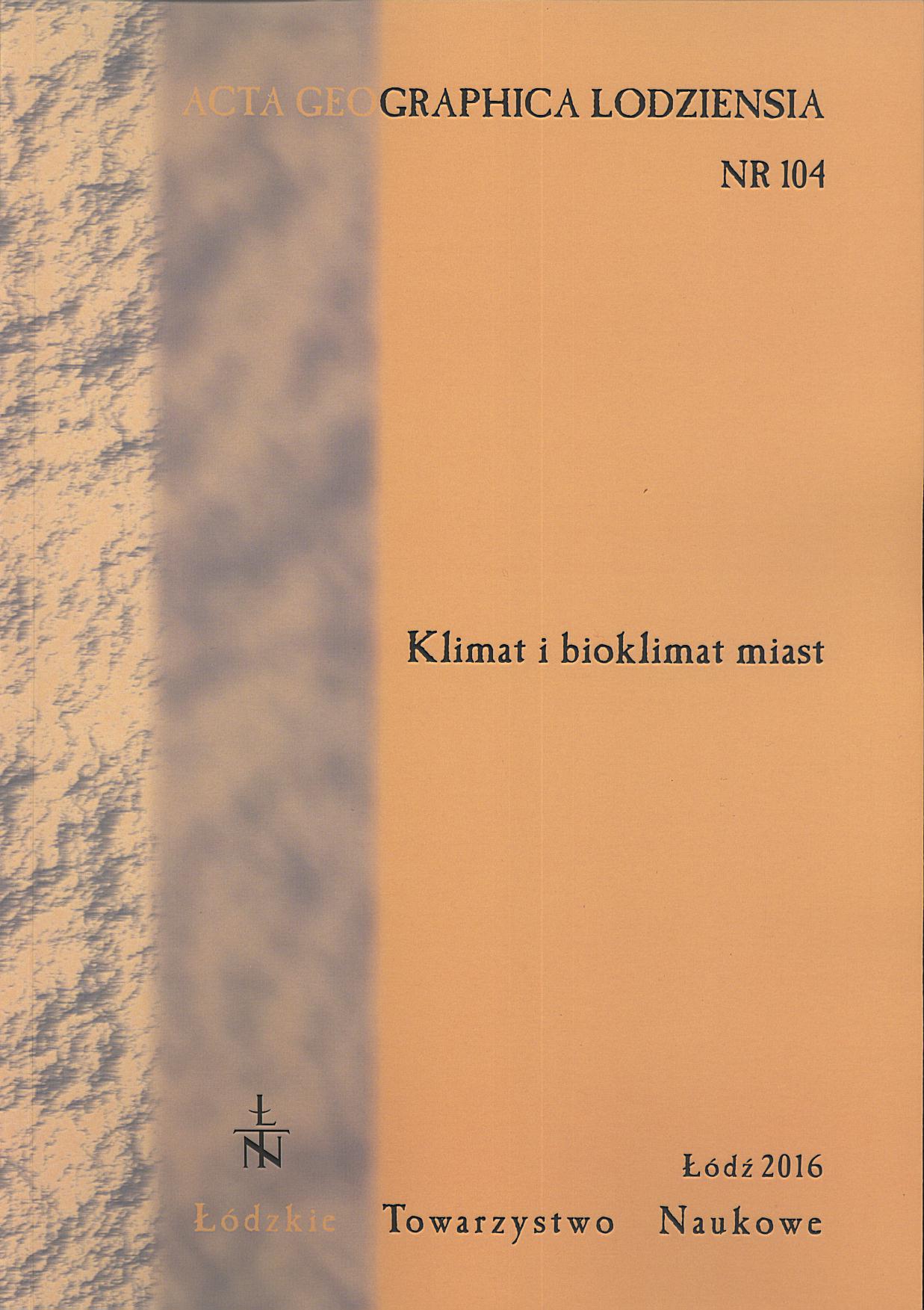Koncentracja zanieczyszczeń pyłowych powietrza PM2,5 w Krakowie w latach 2010–2014
Concentration of the air dust pollution PM2.5 in Cracow in 2010–2014
Author(s): Joanna Jędruszkiewicz, Piotr Piotrowski, Bartłomiej PietrasSubject(s): Geography, Regional studies, Environmental Geography
Published by: Łódzkie Towarzystwo Naukowe
Keywords: air dust pollution; PM2.5; Kraków; wind speed; atmospheric circulation
Summary/Abstract: Airborne particulate matter has far-reaching consequences for the environment and human healthincluding premature mortality, hospital admissions, allergic reactions, lung dysfunction and cardiovascular diseases. Attention has been paid to particulate matter of less than 2.5 μm in diameter (PM2.5) asa metric more closely associated with adverse health effects than PM10. Since Kraków is one of themost polluted cities in Poland, the main goal of this paper was to study the relation between meteorologicalparameters such as wind speed and advection direction and the concentration of PM2.5 in adifferent time scale (daily, seasonal, annual variability). Hourly PM2.5 concentration data from three air quality monitoring sites in Kraków (Krasińskiego,Nowa Huta, Kurdwanów) were used. The anemometric data was obtained from the Vaisalaautomatic weather station mounted on the roof of the building of the Faculty of Physics and AppliedComputer Science, University of Science and Technology. The PM2.5 concentration in all of monitoring sites is characterized by a similar annual course. In the period of 2010–2014 the highest daily concentration of PM2.5 was observed in winter (Decemberand January) 145 μg/m3 (Nowa Huta), 296 μg/m3 (Kurdwanów) and 356 μg/m3 (Krasińskiego), while the lowest concentration from May to August (usually below 50 μg/m3). Generally, the daily PM2.5concentration standards of 25 μg/m3 (WHO 2005) were exceeded from October to April. Furthermore, also the annual standards of 10 μg/m3 (WHO) and 25 μg/m3 (European Union) were exceeded (WHO2005; Air Quality Standards 2015). The annual mean of PM2.5 concentrations was 34 μg/m3 (Kurdwanów), 36 μg/m3 (Nowa Huta) i 50 μg/m3 (Krasińskiego). The highest concentrations of particulatematter were associated with a onsiderable temperature decrease (below –10°C) and the occurrenceof a high pressure system. High annual variability of the PM2.5 concentrations is mainly due to an increase in fossil fuelcombustion and frequent occurrence of stable boundary layer (which is unfavorable for pollutant dispersion) in the cold half year and favorable conditions for convection development in the warm halfyear. The daily maximum of PM2.5 concentration was observed from 9 PM to 3 AM and the secondone around 9 AM. In the cold half year the concentration was 2.5 times higher than in the warm halfyear, primarily due the total effect of both heating (emission of fossil fuel combustion) and transport. One of the key factors for PM2.5 concentrations is topography which, in case of Kraków, favors westernadvection. Wind speed during the south-western circulation was 1.5 times lower on average incomparison to western inflow. That has a significant impact on the reduction of PM2.5 concentrationduring the western inflow in the cold half year.The concentration of PM2.5 in a densely built-up area of the city center (Krasińskiego) is muchgreater than in the other two monitoring sites surrounded by green areas and less traffic. This type ofrelationship was found during all year, but the most pronounced differences occurred during wintertime (e.g. approximately 20 μg/m3 for the mean hourly concentration).
Journal: Acta Geographica Lodziensia
- Issue Year: 2016
- Issue No: 104
- Page Range: 123-135
- Page Count: 13
- Language: Polish

